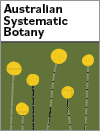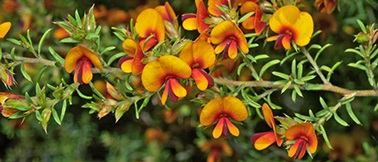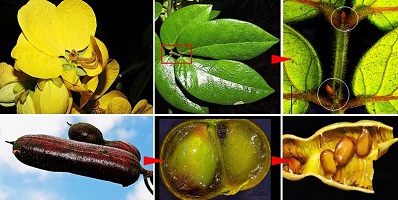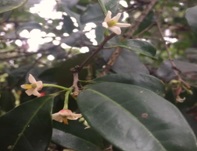In the heart of the South American central Andes lies a botanical treasure, namely, the Asteraceae family, among which the enigmatic Stevia genus takes centre stage. This study dives into the complex task of identifying distinct Stevia species in this region, where overlapping traits have posed a challenge. Through meticulous morphometric analyses and innovative methods, scientists have successfully pinpointed key traits that distinguish nine Stevia species, painting a clearer picture of this biodiversity hotspot. These findings not only refine our understanding of biodiversity but also hold potential implications for future conservation efforts. (Photographs by D. G. Gutiérrez.)

Australian Systematic Botany
Volume 37 Number 2 2024
A taxonomic revision of the Pultenaea setulosa species complex is presented, recognising 18 species. Pultenaea setulosa is endemic to south-east Queensland. We reinstate Pultenaea boormanii, P. campbellii (endemic to NSW) and P. lapidosa (endemic to Victoria). We describe 14 new species, all endemic to NSW: Pultenaea acanthocalyx, Pultenaea corrickiae, Pultenaea estelleae, Pultenaea farmeriana, Pultenaea hoskingii, Pultenaea imminuta, Pultenaea murrayi, Pultenaea palssoniae, Pultenaea praetermissa, Pultenaea purdieae, Pultenaea renneri, Pultenaea venusta, Pultenaea westonii and Pultenaea woolcockiorum. Pultenaea procumbens and P. setigera are recircumscribed. (Photograph credit: M. Fagg.)
SB23014 Abstract | SB23014 Full Text | SB23014PDF (100.7 MB) | SB23014Supplementary Material (86 KB) Open Access Article
A taxonomic study of Senna series Bacillares (Fabaceae) was conducted in the Atlantic Forest north of the São Francisco River in north-eastern Brazil, one of the global biodiversity hotspots. More than half of the species in this series are endemic to Brazil, and ~20% are represented in the study area, with Senna pluribracteata F.S.Souto & R.T.Queiroz being narrowly endemic. The typification of names in this work supports correct taxonomic interpretation, being important for the identification and distinguishing of taxa. (Photograph by R. T. Queiroz.)
Understanding species boundaries is crucial for conserving threatened rainforest species. In Australia, the Fontainea plant group faces challenges because of their limited, sometimes critically small, populations and complex taxonomy. A new study combines DNA analysis and physical characteristics to define species boundaries, showing a potential novel species, emphasising the need for conservation efforts, and highlighting the broader importance of accurate species identification for effective conservation strategies. (Photograph by Aaron Brunton.)
SB23024 Abstract | SB23024 Full Text | SB23024PDF (3 MB) | SB23024Supplementary Material (494 KB) Open Access Article
Some species of the legume genus Derris have been long used by people as insecticides and fish poisons due to certain compounds such as rotenone contained in their tissues. Yet, science has not described all the diversity in this important group of plants. Through detailed study in the field and laboratory we have revised the species of Derris and Brachypterum in Australia, and named two new Australian species of Brachypterum.
SB23030 Abstract | SB23030 Full Text | SB23030PDF (25.5 MB) Open Access Article








